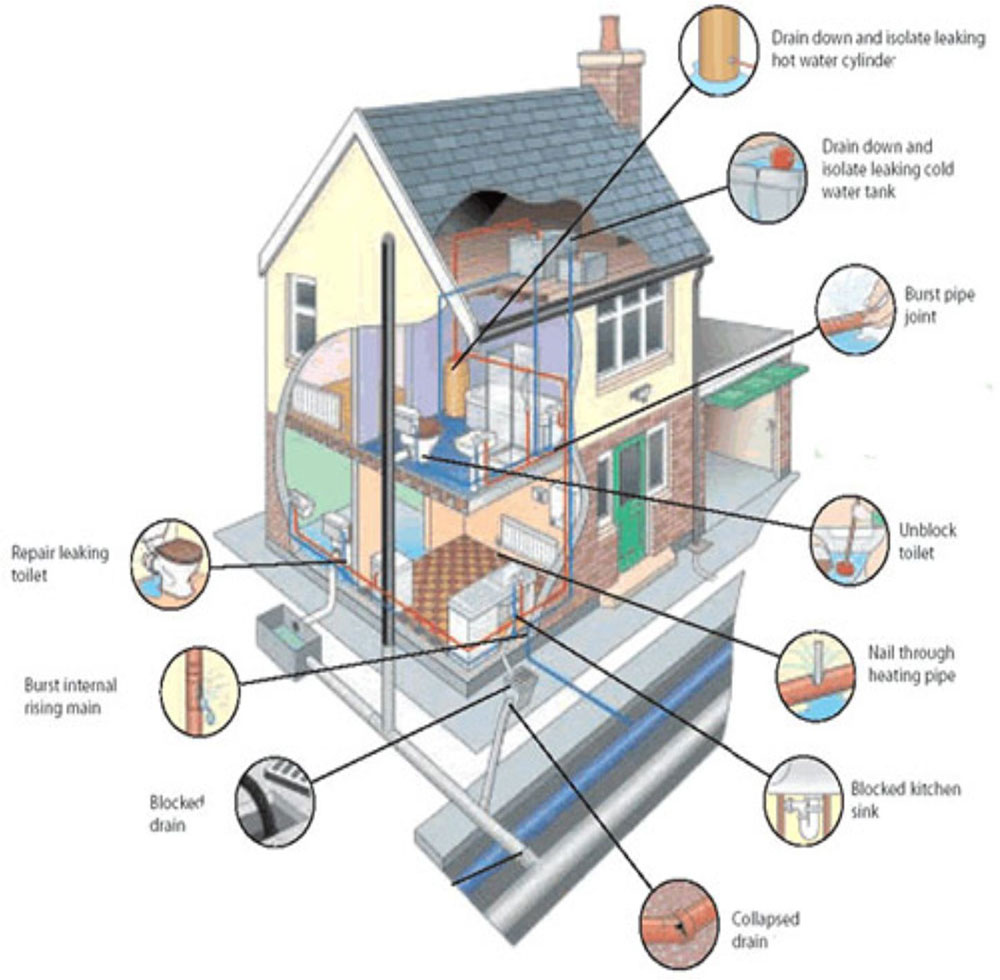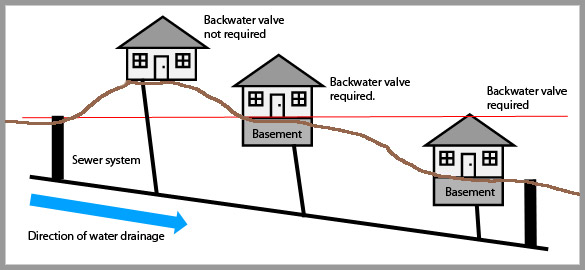How The Anatomy of Your House's Plumbing System Matters
How The Anatomy of Your House's Plumbing System Matters
Blog Article
Just how do you actually feel in relation to Anatomy of a House: Understanding the Components?

Understanding exactly how your home's pipes system works is essential for every house owner. From delivering tidy water for drinking, food preparation, and bathing to securely removing wastewater, a properly maintained pipes system is important for your family's health and wellness and comfort. In this detailed guide, we'll check out the complex network that makes up your home's plumbing and deal pointers on maintenance, upgrades, and taking care of common problems.
Intro
Your home's plumbing system is more than simply a network of pipelines; it's a complex system that ensures you have access to tidy water and reliable wastewater elimination. Recognizing its components and how they collaborate can help you avoid expensive fixings and ensure everything runs efficiently.
Basic Components of a Plumbing System
Pipes and Tubing
At the heart of your pipes system are the pipelines and tubes that lug water throughout your home. These can be constructed from various materials such as copper, PVC, or PEX, each with its advantages in terms of toughness and cost-effectiveness.
Fixtures: Sinks, Toilets, Showers, etc.
Fixtures like sinks, toilets, showers, and bathtubs are where water is utilized in your house. Comprehending exactly how these fixtures connect to the plumbing system helps in diagnosing problems and planning upgrades.
Valves and Shut-off Points
Valves control the flow of water in your plumbing system. Shut-off valves are essential during emergencies or when you need to make repairs, allowing you to separate parts of the system without disrupting water flow to the whole residence.
Water System System
Main Water Line
The main water line attaches your home to the community supply of water or a private well. It's where water enters your home and is distributed to numerous fixtures.
Water Meter and Stress Regulator
The water meter steps your water use, while a pressure regulatory authority ensures that water streams at a safe stress throughout your home's plumbing system, preventing damages to pipelines and components.
Cold Water vs. Warm water Lines
Understanding the difference in between cold water lines, which supply water directly from the main, and warm water lines, which carry heated water from the hot water heater, assists in troubleshooting and preparing for upgrades.
Water drainage System
Drain Pipeline and Traps
Drain pipes lug wastewater far from sinks, showers, and bathrooms to the sewer or septic tank. Catches protect against sewage system gases from entering your home and additionally catch particles that might cause obstructions.
Air flow Pipes
Air flow pipes allow air right into the drainage system, protecting against suction that can slow water drainage and create traps to empty. Appropriate ventilation is essential for keeping the stability of your pipes system.
Relevance of Correct Drainage
Making certain proper water drainage avoids backups and water damages. Frequently cleansing drains pipes and maintaining catches can protect against pricey repair work and expand the life of your pipes system.
Water Heating Unit
Sorts Of Water Heaters
Hot water heater can be tankless or standard tank-style. Tankless heating systems warm water as needed, while tanks store heated water for immediate usage.
Upgrading Your Pipes System
Reasons for Updating
Upgrading to water-efficient components or replacing old pipelines can improve water high quality, lower water expenses, and boost the worth of your home.
Modern Plumbing Technologies and Their Advantages
Explore technologies like clever leak detectors, water-saving bathrooms, and energy-efficient hot water heater that can conserve money and reduce environmental impact.
Price Considerations and ROI
Determine the upfront expenses versus lasting savings when thinking about pipes upgrades. Many upgrades spend for themselves through minimized utility expenses and less repair work.
Just How Water Heaters Connect to the Pipes System
Understanding exactly how water heaters connect to both the cold water supply and warm water distribution lines helps in identifying issues like not enough hot water or leakages.
Upkeep Tips for Water Heaters
On a regular basis purging your water heater to eliminate debris, checking the temperature setups, and evaluating for leakages can extend its life expectancy and boost energy efficiency.
Typical Plumbing Concerns
Leakages and Their Causes
Leakages can take place due to aging pipes, loose installations, or high water stress. Resolving leakages without delay protects against water damages and mold development.
Blockages and Obstructions
Clogs in drains and bathrooms are frequently triggered by flushing non-flushable items or a buildup of oil and hair. Using drainpipe displays and bearing in mind what decreases your drains can prevent clogs.
Indicators of Pipes Troubles to Expect
Low tide stress, sluggish drains, foul odors, or unusually high water bills are signs of potential pipes troubles that need to be attended to promptly.
Plumbing Maintenance Tips
Normal Examinations and Checks
Arrange annual plumbing inspections to capture concerns early. Seek indications of leakages, rust, or mineral build-up in faucets and showerheads.
DIY Maintenance Tasks
Basic jobs like cleansing faucet aerators, checking for bathroom leaks making use of color tablet computers, or protecting exposed pipelines in cold environments can prevent significant pipes concerns.
When to Call a Specialist Plumber
Know when a plumbing concern calls for specialist experience. Trying intricate repair services without proper knowledge can bring about even more damage and higher repair prices.
Tips for Lowering Water Use
Straightforward behaviors like taking care of leaks without delay, taking shorter showers, and running full loads of washing and recipes can save water and lower your utility expenses.
Eco-Friendly Plumbing Options
Take into consideration lasting plumbing materials like bamboo for floor covering, which is durable and green, or recycled glass for counter tops.
Emergency situation Preparedness
Steps to Take Throughout a Pipes Emergency
Know where your shut-off valves are located and just how to turn off the water in case of a ruptured pipe or significant leakage.
Significance of Having Emergency Situation Get In Touches With Handy
Keep get in touch with information for regional plumbers or emergency situation solutions conveniently offered for quick action throughout a plumbing situation.
Environmental Effect and Conservation
Water-Saving Fixtures and Home Appliances
Installing low-flow faucets, showerheads, and bathrooms can significantly minimize water use without sacrificing performance.
Do It Yourself Emergency Situation Fixes (When Appropriate).
Short-lived fixes like utilizing air duct tape to patch a leaking pipeline or positioning a pail under a dripping tap can minimize damage until a professional plumbing gets here.
Conclusion.
Comprehending the makeup of your home's pipes system encourages you to keep it efficiently, saving time and money on fixings. By adhering to regular maintenance routines and staying educated concerning modern-day plumbing innovations, you can ensure your pipes system runs successfully for years to come.
HOW YOUR PLUMBING SYSTEM WORKS
Which Pipes Do What?
Blue lines = fresh water supply entering the building Red lines = hot water supply entering the building Grey lines = pipes carrying waste away from the building and venting pipes carrying gases away from the building (through the roof) YOUR MAIN PLUMBING SYSTEMS
There are two main plumbing systems that support your home s basic plumbing needs one that brings clean water into your home, and one that sends dirty water away from your home. Connected to the toilet, bath, shower, and other faucets in your home, these two systems keep your water flowing in the right directions.
ACCESSING FRESH WATER
Fresh and clean water is brought into your home through the main water supply line . Filtered through one pipe, this water is pressured to flow into the various fixtures in your home at any given time.
This water can be sourced from a well located on your property, a pond or river (mostly cottages), or, as in most cases, from the city s municipal water treatment centre. However, it is important to note that water that is untreated, such as the water siphoned from ponds or rivers, may not be safe to drink. Personal water supplies always need to be treated for hardness and contaminants before consumed.
MUNICIPAL WATER SUPPLIES
Improve taste and odour Remove sediment Eliminate hardness Reduce chlorine COLD WATER SUPPLY VS. HOT WATER SUPPLY
Cold water flows into your home or building through the service line, which then distributes hot or cold water to your fixtures. This line is most commonly run through a central column that runs floor to floor. Hot water runs in short and straight pipes as the longer the pipeline, the more heat that will be lost in the transfer. Having shorter pipes also allows residents to access hot water more quickly.
WASTE WATER SYSTEM
Your wastewater system is divided into two parts pipes that send wastewater away from your home and venting pipes that send sewer gas away from your home. Sewage water travels through pipes that flush the water and waste towards local sewers that are operated and managed by your city or town. Most sewer systems rely on gravity to move the wastewater to where it needs to go.
The further away from your toilet or sink, the larger wastewater pipes become. This allows for waste to be disposed of from various parts of your home or business at once without pipe blockages. The angle and flow of these pipes are also essential for keeping your waste pipes clear of build up.
https://harrisplumbing.ca/how-your-home-plumbing-system-works/

I found that blog entry about Anatomy of a House: Understanding the Components while doing a search on the internet. Do you know about someone else who is enthusiastic about the niche? Be sure promote it. Thank you for going through it.
Schedule Estimate Report this page